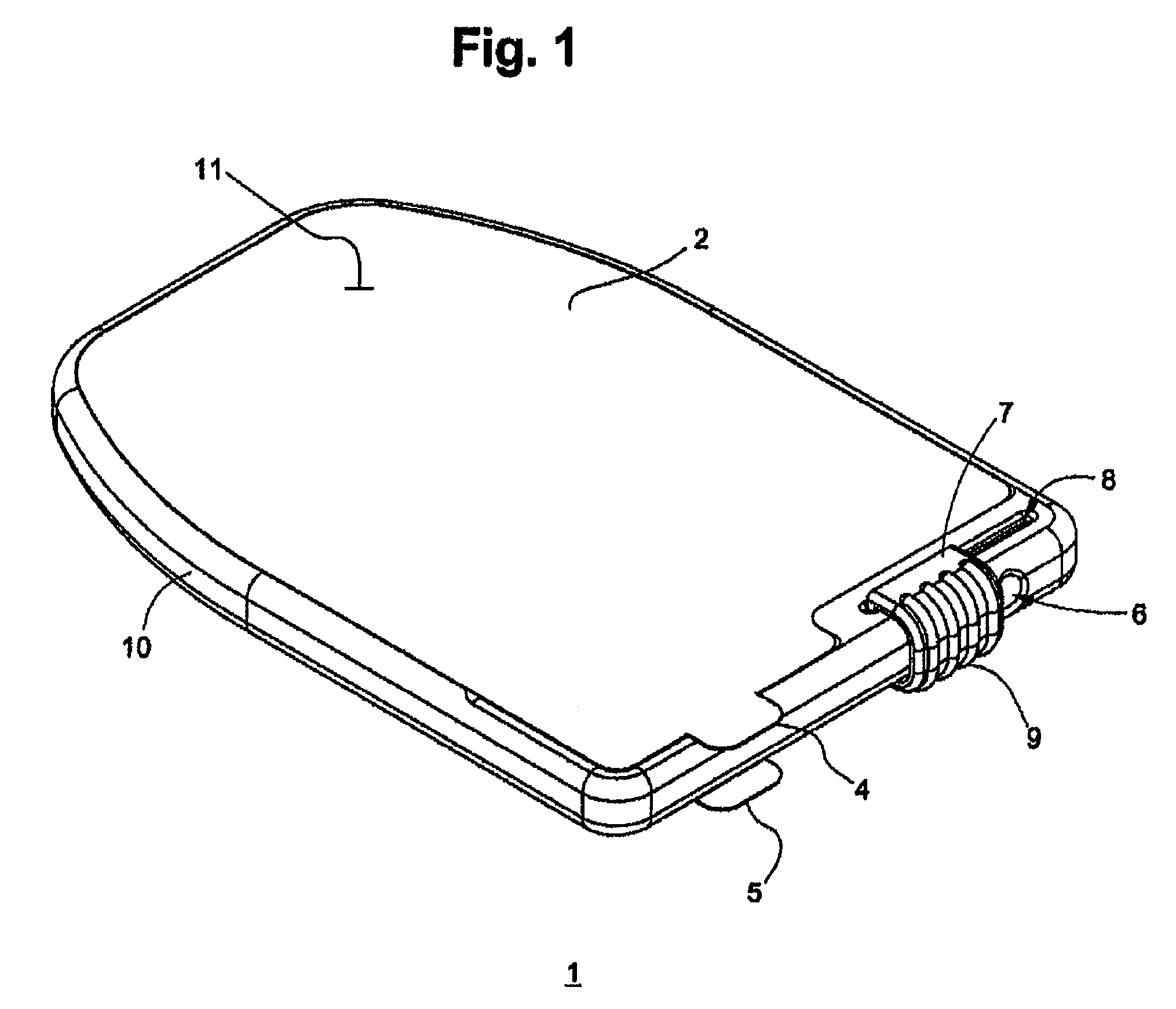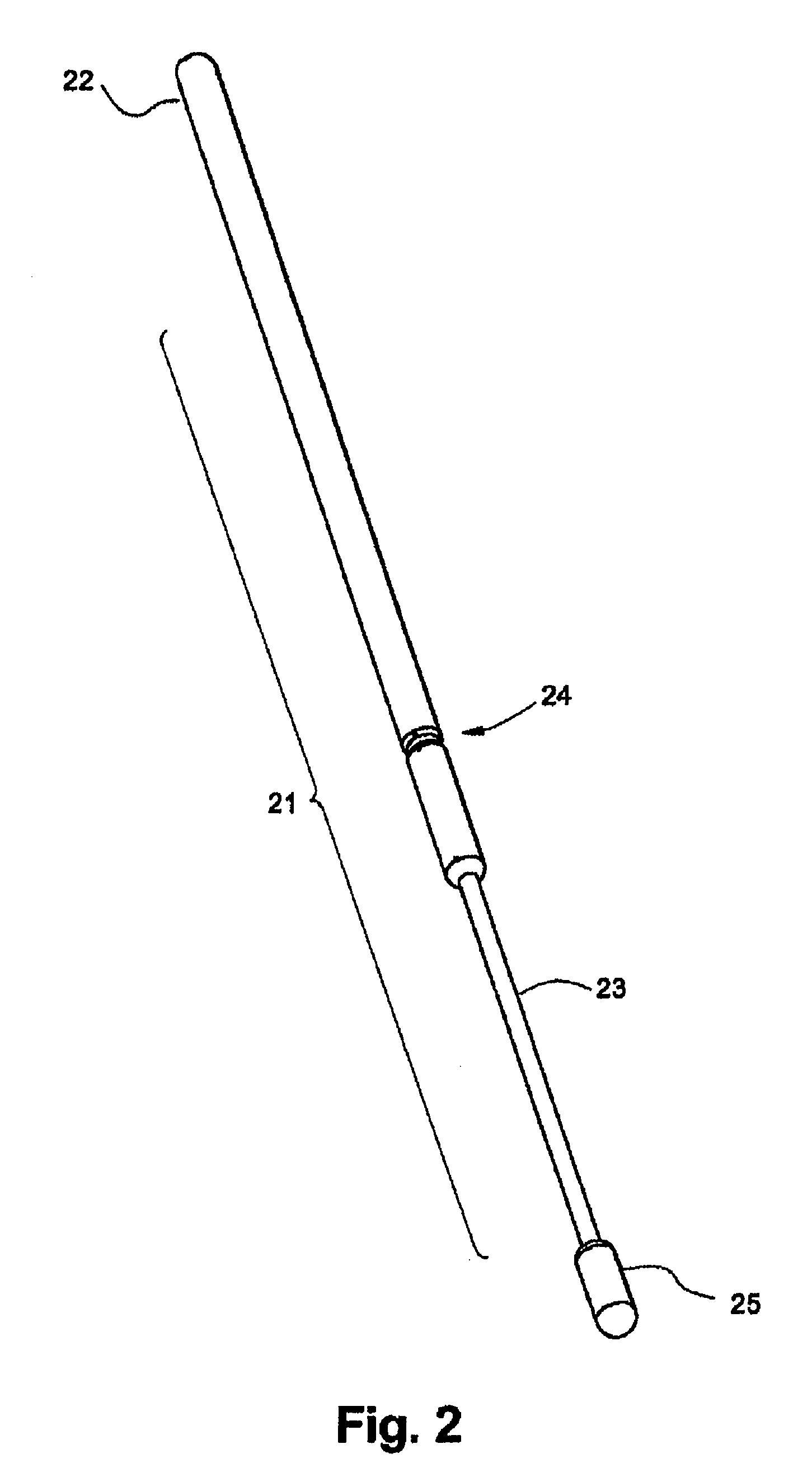Sanitary swab collection system, microfluidic assay device, and methods for diagnostic assays
a collection system and microfluidic technology, applied in the field of sanitary swab collection system, microfluidic assay device, and methods for diagnostic assay, can solve the problems of contamination of the external surfaces of the swab collection container by contact with specimen residues or unrelated patient-derived bodily materials, unsanitary and grossly objectionable, cross-contamination by transmission on the surface of fomites, etc., to achieve the effect of reducing the risk of contamination
- Summary
- Abstract
- Description
- Claims
- Application Information
AI Technical Summary
Benefits of technology
Problems solved by technology
Method used
Image
Examples
example 1
[0108]A swab is provided in a sterile packet, the shaft of the swab being formed with a notch separating the handle from the sampling tip. The swab is rubbed in the gingiva separating the teeth from the gums of a child and inserted into a collection device of the invention. The swab handle is bent vigorously so that it breaks at the notch, releasing the swab tip with specimen into the device. The swab insertion channel is then covered with a sliding closure that rides in tracks in the housing, and sealed irreversibly, the sliding closure having a ratcheted underside which mates and locks over a locking tooth or spur on the body of the device. The professional then removes a protective external skin from the device, taking care not to contaminate the freshly exposed surfaces, and hands the device to an aide for processing.
example 2
[0109]A swab is provided in a sterile envelope, the shaft of the swab being formed of a material suitable for cutting with a blade. The patient is asked to provide a self-collected specimen of the vaginal mucosa and is given instructions. The patient collects the sample and inserts the soft tip of the swab into the sample collection device that was provided. The patient hands the device to a health professional, who takes it with gloved hands. The health professional closes the cover of the device, cutting free the swab handle and discarding it, and then removes the disposable external skins on the device, taking care not to contaminate the freshly exposed surfaces. After removing the skins, the health professional inserts the device into a semi-automated analytical apparatus and completes the assay. The result is read and the device with sample is then discarded. The analytical apparatus is equipped with networking capability so as to transmit identifying and “smart” electronic dat...
PUM
| Property | Measurement | Unit |
|---|---|---|
| thicknesses | aaaaa | aaaaa |
| pore diameters | aaaaa | aaaaa |
| volume | aaaaa | aaaaa |
Abstract
Description
Claims
Application Information
 Login to View More
Login to View More - R&D
- Intellectual Property
- Life Sciences
- Materials
- Tech Scout
- Unparalleled Data Quality
- Higher Quality Content
- 60% Fewer Hallucinations
Browse by: Latest US Patents, China's latest patents, Technical Efficacy Thesaurus, Application Domain, Technology Topic, Popular Technical Reports.
© 2025 PatSnap. All rights reserved.Legal|Privacy policy|Modern Slavery Act Transparency Statement|Sitemap|About US| Contact US: help@patsnap.com



